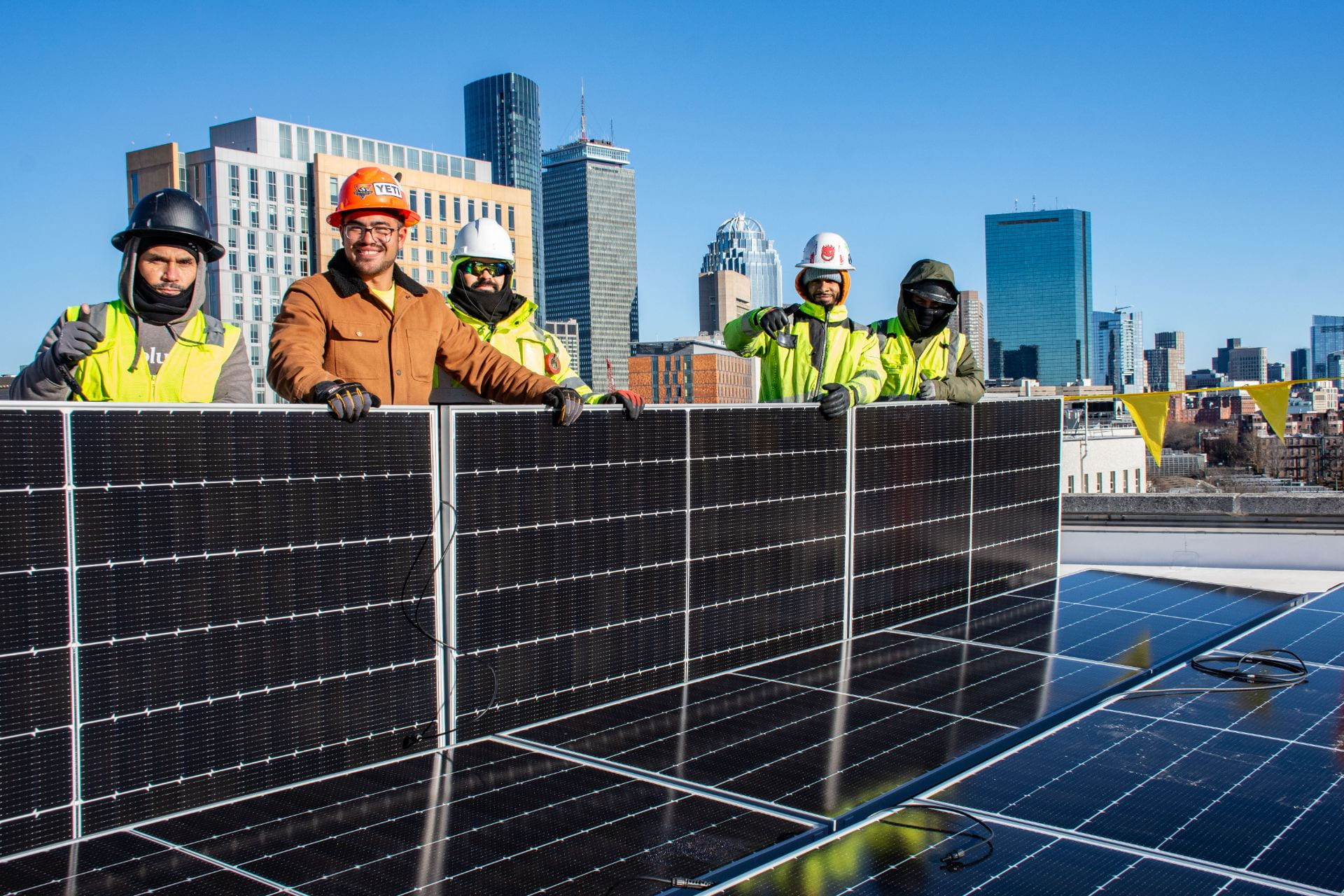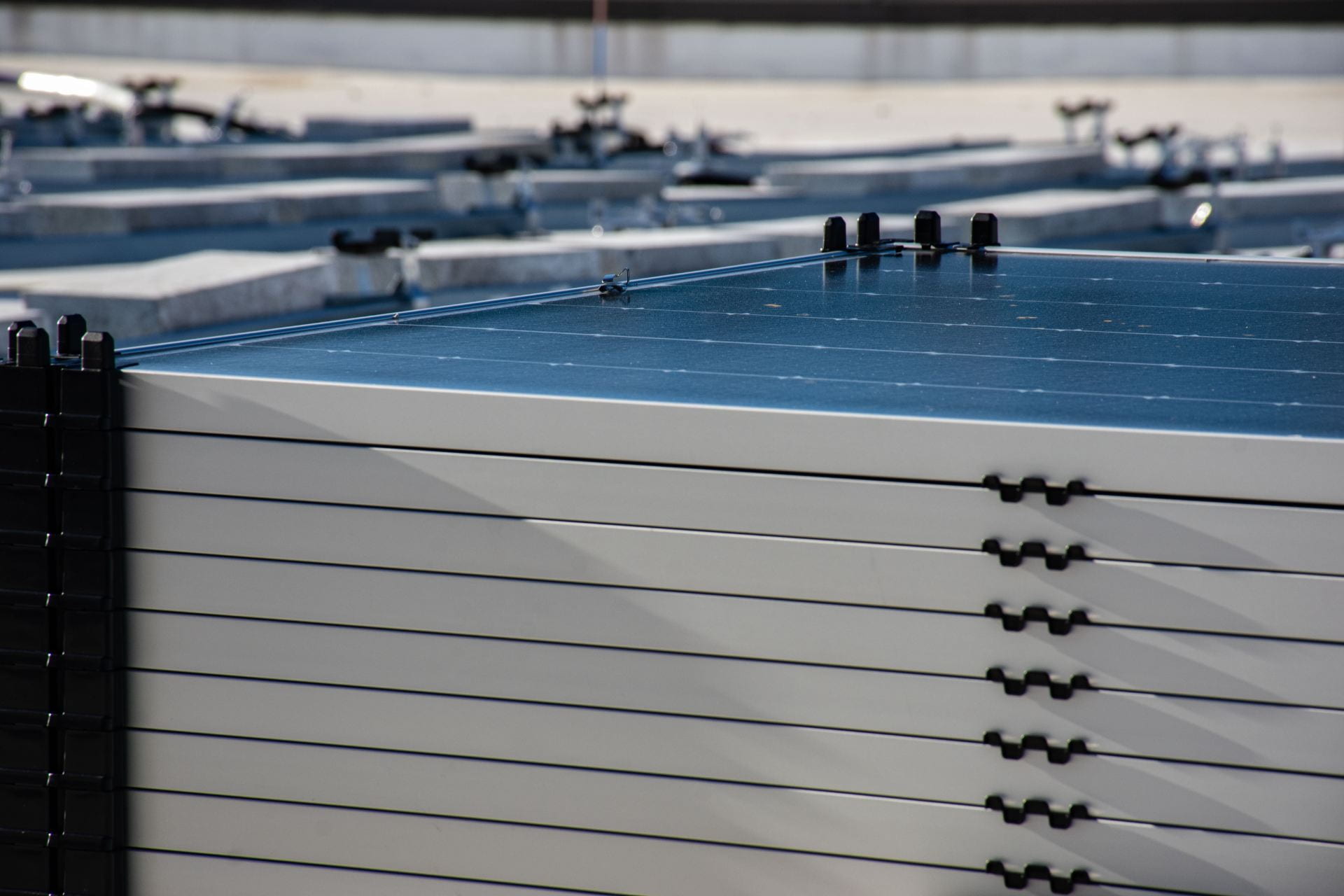Unveiling the Snell Library Solar Panels

As students study within the walls of Snell Library on Northeastern’s Boston campus, the ongoing renovations can be easily noticed. Yet above the hustle and bustle of the busy floors, a new addition stands as a symbol of the university’s journey towards a more sustainable future: solar panels.
On March 13th 2024, the new solar system was officially declared activated. This on-grid, rooftop system, projected to provide 157.8kWp DC of power for the university’s library, underscores the institution’s dedication to sustainable practice. Partnering with Ameresco, a leading renewable energy integrator, Northeastern’s Planning, Real Estate and Facilities (PREF) Division brought this project to fruition. “This solar installation represents a key milestone on Northeastern University’s path to decarbonization, and Ameresco is honored to be a partner with the University on their journey,” says Pete Christakis, Executive Vice President and General Manager of the East Region at Ameresco.
The installation will be celebrated on Tuesday, April 2nd at the Snell Library Quad. But before we rejoice over this milestone, it’s important to understand the journey that brought us here. PREF’s Senior Capital Projects Manager, Mike Petrucci, sheds light on the challenges faced in harnessing solar energy on an urban campus. His team encountered various considerations as they navigated the complexities of installing solar panels on Snell Library. From the limitations posed by building structures to the need for efficient space utilization, the project required meticulous planning and strategic coordination.
Additionally, existing building units such as air handlers or compressors further limit roof space for solar technology. Flatter roofs were preferred for this scope of projects due to reduced obstruction, while taller buildings maximize energy savings without shading the panels.

“Communication is key,” Petrucci emphasized. “And sometimes it’s about overcommunicating, which isn’t necessarily a bad thing, but essential when collaborating with various parties to ensure that everybody is informed and engaged.”
Petrucci’s team collaborated closely with various groups including Ameresco, the Climate Justice and Sustainability Hub, NU Trades, and more to ensure project completion.
Jacob Glickel, Director of Sustainability Operations at PREF, elaborated more on the intricacies involved with the project. Because buildings are constructed straight up, this leaves limited space on building roofs to erect a larger array of panels. “You’re looking for that economy of having enough space to make the project worth it,” he explained. Snell Library provided an ideal location for the project, boasting a spacious roof, ample height, minimal shading, and recent renovations, seamlessly integrating with the electrical grid.
Despite encountering challenges, such as the logistical constraints posed by the proximity to the Northeast corridor, the project remained resilient. With limitations on crane placement behind buildings, project managers pivoted, strategizing crane picks from alternative angles. Furthermore, navigating through the labyrinth of paperwork and permits was no small feat. Nevertheless, through adaptability and unwavering dedication, Petrucci and his team completed the project ahead of schedule.

Solar energy at Northeastern not only symbolizes sustainability but actively supports the university’s decarbonization strategy. By generating carbon-free electricity on-site, the university minimizes reliance on external energy sources and reduces environmental impact. Mark Bates, Energy Manager at Northeastern’s PREF Division, estimates that the installed solar units at Snell could save around 13,600 kilowatt-hours annually, enough to power Kerr Hall for a year. This highlights the significant role of solar technology in advancing sustainable energy practices.
The Snell solar panel installation has been underway for nearly a year. But decarbonization and solar efforts won’t stop there: new plans are already in motion for future projects, including the replacement of the solar panels installed above the Curry Student Center. Reflecting on the university’s history, Bates remarked “The university was one of the first in the country in 1994 when they put their array on top of the Curry Student Center, I think that demonstrates a larger narrative for where we want to be with energy and sustainability.”
Glickel also shared his vision for future campus development. “My hope going forward is that all new buildings are going to be designed to hold solar panels so that they’re maximizing as they go,” he said. This forward-thinking approach aligns with our commitment to sustainability.
Looking beyond the installation of solar panels, Glickel outlines the “three pillars” of decarbonization: generating electricity, increasing building efficiency, and eliminating natural gas use. Solar panel adoption aligns with these goals, driving Northeastern University closer to its eco-conscious objectives. Beyond solar, future initiatives focus on enhancing building efficiency and reducing reliance on fossil fuels. Bates emphasizes the integration of energy-efficient systems and innovative technologies to create a greener campus.
Written by Tula Singer March 25th, 2024
Photos by Alex Gritsinin
